#royal lyceum
Photo
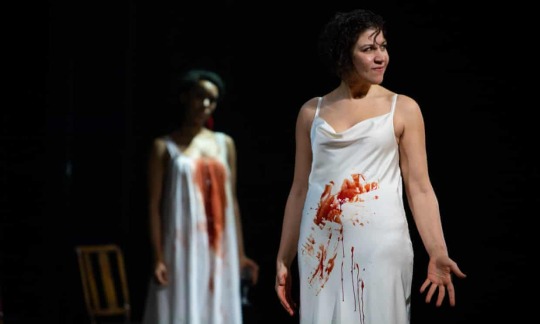
Jade Ogugua as Lady Macduff and Nicole Cooper as Lady Macbeth in Macbeth (An Undoing). Photograph: Stuart Armitt.
To summon up witches is to play with fire. Could the same be true about summoning up a dead playwright? That is what writer/director Zinnie Harris does in her audacious conjuring of Shakespeare’s Macbeth. It is not so much a revival as an exhumation, one in which she dares to speculate what the playwright might have done had he been true to his own instincts.
#shakespeare#william shakespeare#macbeth#lady macbeth#witches#zinnie harris#Macbeth (An Undoing)#royal lyceum#edinburgh#lady macduff
27 notes
·
View notes
Photo

Costume design by Wilhelm (Charles William Pitcher, 1858-1925) for Miss H. Gallon as Ivy and Miss Cicely Turner as Jack Frost in the pantomime Santa Claus, as performed at the Royal Lyceum Theatre on 27th December
10 notes
·
View notes
Text
Macbeth (an undoing)
Zinnie Harris (after William Shakespeare)Lyceum Theatre CompanyRoyal Lyceum Theatre Edinburgh4–25 February 2023
Continue reading Macbeth (an undoing)
View On WordPress
0 notes
Text
The Snow Queen at Royal Lyceum Theatre Review
Morna Young’s very Scottish adaptation of Hans Christian Anderson’s The Snow Queen is a delight from start to finish. We watch as if through a mirror to a beautiful rendering of the Lyceum’s Grand Circle recreated on stage into a clever two-level set crafted with much detail (we were in row A of the stalls so got a pretty close up view). The costumes are beautifully crafted too.
The tale is a…

View On WordPress
0 notes
Video
The Lyceum at Cristmas by FotoFling Scotland
Via Flickr:
The Snow Queen By Hans Christian Andersen, adapted by Morna Young Directed by Cora Bissett Thu 23 Nov – Sun 31 Dec 2023
#ROYAL LYCEUM THEATRE COMPANY#Scotland#The Snow Queen#Flickr#Royal Lyceum Theatre#Theatre#Edinburgh#Christmas#flickr
1 note
·
View note
Text

FATHER & SON: James Earl Jones with his Father Robert Earl Jones on Stage in the 1962 Production "Moon on a Rainbow Shawl."
Robert Earl Jones (February 3, 1910 – September 7, 2006), sometimes credited as Earl Jones, was an American actor and professional boxer. One of the first prominent Black film stars, Jones was a living link with the Harlem Renaissance of the 1920s and 1930s, having worked with Langston Hughes early in his career.
Jones was best known for his leading roles in films such as Lying Lips (1939) and later in his career for supporting roles in films such as The Sting (1973), Trading Places (1983), The Cotton Club (1984), and Witness (1985).
Jones was born in northwestern Mississippi; the specific location is unclear as some sources indicate Senatobia, while others suggest nearby Coldwater. He left school at an early age to work as a sharecropper to help his family. He later became a prizefighter. Under the name "Battling Bill Stovall", he was a sparring partner of Joe Louis.
Jones became interested in theater after he moved to Chicago, as one of the thousands leaving the South in the Great Migration. He moved on to New York by the 1930s. He worked with young people in the Works Progress Administration, the largest New Deal agency, through which he met Langston Hughes, a young poet and playwright. Hughes cast him in his 1938 play, Don't You Want to Be Free?.
Jones also entered the film business, appearing in more than twenty films. His film career started with the leading role of a detective in the 1939 race film Lying Lips, written and directed by Oscar Micheaux, and Jones made his next screen appearance in Micheaux's The Notorious Elinor Lee (1940). Jones acted mostly in crime movies and dramas after that, with such highlights as Wild River (1960) and One Potato, Two Potato (1964). In the Oscar-winning 1973 film The Sting, he played Luther Coleman, an aging grifter whose con is requited with murder leading to the eponymous "sting". In the later 20th century, Jones appeared in several other noted films: Trading Places (1983) and Witness (1985).
Toward the end of his life, Jones was noted for his stage portrayal of Creon in The Gospel at Colonus (1988), a black musical version of the Oedipus legend. He also appeared in episodes of the long-running TV shows Lou Grant and Kojak. One of his last stage roles was in a 1991 Broadway production of Mule Bone by Hughes and Zora Neale Hurston, another important writer of the Harlem Renaissance. His last film was Rain Without Thunder (1993).
Although blacklisted by the House Un-American Activities Committee in the 1950s due to involvement with leftist groups, Jones was ultimately honored with a lifetime achievement award by the U.S. National Black Theatre Festival.
Jones was married three times. As a young man, he married Ruth Connolly (died 1986) in 1929; they had a son, James Earl Jones. Jones and Connolly separated before James was born in 1931, and the couple divorced in 1933. Jones did not come to know his son until the mid-1950s. He adopted a second son, Matthew Earl Jones. Jones died on September 7, 2006, in Englewood, New Jersey, from natural causes at age 96.
THEATRE
1945 The Hasty Heart (Blossom) Hudson Theatre, Broadway
1945 Strange Fruit (Henry) McIntosh NY theater production
1948 Volpone (Commendatori) City Center
1948 Set My People Free (Ned Bennett) Hudson Theatre, Broadway
1949 Caesar and Cleopatra (Nubian Slave) National Theatre, Broadway
1952 Fancy Meeting You Again (Second Nubian) Royale Theatre, Broadway
1956 Mister Johnson (Moma) Martin Beck Theater, Broadway
1962 Infidel Caesar (Soldier) Music Box Theater, Broadway
1962 The Moon Besieged (Shields Green) Lyceum Theatre, Broadway
1962 Moon on a Rainbow Shawl (Charlie Adams) East 11th Street Theatre, New York
1968 More Stately Mansions (Cato) Broadhurst Theatre, Broadway
1975 All God's Chillun Got Wings (Street Person) Circle in the Square Theatre, Broadway
1975 Death of a Salesman (Charley)
1977 Unexpected Guests (Man) Little Theatre, Broadway
1988 The Gospel at Colonus (Creon) Lunt-Fontanne Theatre, Broadway
1991 Mule Bone (Willie Lewis) Ethel Barrymore Theatre, Broadway
FILMS
1939 Lying Lips (Detective Wenzer )
1940 The Notorious Elinor Lee (Benny Blue)
1959 Odds Against Tomorrow (Club Employee uncredited)
1960 Wild River (Sam Johnson uncredited)
1960 The Secret of the Purple Reef (Tobias)
1964 Terror in the City (Farmer)
1964 One Potato, Two Potato (William Richards)
1968 Hang 'Em High
1971 Mississippi Summer (Performer)
1973 The Sting (Luther Coleman)
1974 Cockfighter (Buford)
1977 Proof of the Man (Wilshire Hayward )
1982 Cold River (The Trapper)
1983 Trading Places (Attendant)
1983 Sleepaway Camp (Ben)
1984 The Cotton Club (Stage Door Joe)
1984 Billions for Boris (Grandaddy)
1985 Witness (Custodian)
1988 Starlight: A Musical Movie (Joe)
1990 Maniac Cop 2 (Harry)
1993 Rain Without Thunder (Old Lawyer)
TELEVISION
1964 The Defenders (Joe Dean) Episode: The Brother Killers
1976 Kojak (Judge) Episode: Where to Go if you Have Nowhere to Go?
1977 The Displaced Person (Astor) Television movie
1978 Lou Grant (Earl Humphrey) Episode: Renewal
1979 Jennifer's Journey (Reuven )Television movie
1980 Oye Ollie (Performer) Television series
1981 The Sophisticated Gents (Big Ralph Joplin) 3 episodes
1982 One Life to Live
1985 Great Performances (Creon) Episode: The Gospel at Colonus
1990 True Blue (Performer) Episode: Blue Monday
#james earl jones#black tumblr#black literature#black community#black excellence#blackexcellence365#actor#robert earl jones#stage actor
321 notes
·
View notes
Text
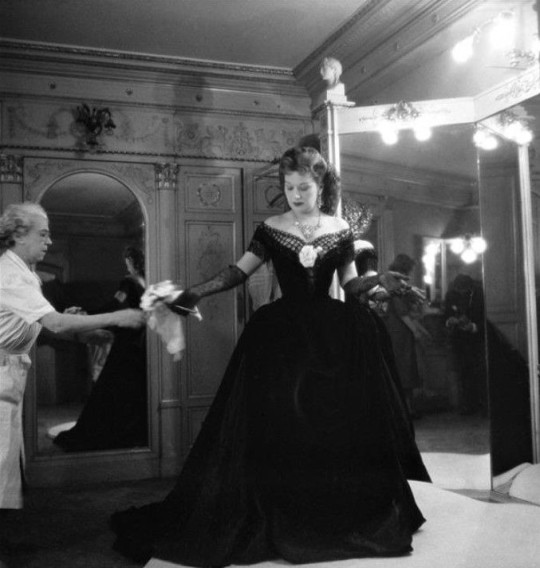
Edwige Feuillère preparing backstage for a production of La Dame aux Camélias, Royal Lyceum Theatre, Edinburgh, 1953.
Photographed by Henry Clarke. Dress by Balmain.
#when i tell you i almost passed out when i first saw this photo a few moments ago#it's so...PERFECT#she's not ready to pose yet and it's absolutely stunning#I've seen the one where she poses and it's gorgeous but THIS??!!?!?!! i think this is one of my faves of her now <3#edwige feuillère#la dame aux camélias#the lady of the camellias#alexandre dumas fils#stage#theatre#théâtre#balmain#pierre balmain#costume drama#period drama#dreamy#vintage#aesthetic#Edinburgh#scotland#paris#france#old hollywood#actress#retro#backstage#noir et blanc#Marguerite Gautier#glamour#fashion
211 notes
·
View notes
Text


Happy Birthday actor Bill Paterson, born on June 3rd 1945 in Glasgow.
Paterson was destined at first for a career as a quantity surveyor, before he rebelled and enrolled at the Royal Scottish Academy of Music and Drama; and soon after he graduated, while he was working at the Citizens’, he became closely involved with the brilliant generation of theatre-makers – including Billy Connolly, Alex Norton, John Bett, Kenny Ireland, John Byrne and John McGrath – who would soon go on to create the Great Northern Welly Boot Show of 1972, and to found the legendary radical touring company 7:84 Scotland.
Paterson shot to national fame in Scotland in 1973, when he created the unforgettable role of Glasgow wide-boy property developer McChuckemup, in 7:84’s unforgettable opening show, The Cheviot, The Stag, And The Black, Black Oil. Then in 1977, he starred in John Byrne’s first play Writer’s Cramp as the improbable hero, Paisley poet Francis Seneca McDade; and after the play transferred to London, quickly developed a successful stage and screen career there, playing the Good Soldier Schewyk in a memorable 1982 production at the National Theatre, and winning roles in films ranging from Bill Forsyth’s Comfort And Joy to The Killing Fields and Truly Madly Deeply. He has appeared in countless television series and radio plays, and published a book of stories based on his Glasgow childhood, Tales From The Back Green; and in 2015, he made a triumphant return to the Scottish stage when he appeared with Brian Cox in the Lyceum Theatre Company’s superb 50th anniversary production of Samuel Beckett’s Waiting For Godot.
Motre recently we have seen Bill appear on the small screen in the comedy Fleabag and in Outlander. In 219 he starred in the blac comedy Guilt, set in Edinburgh.
Bill recently voiced the TV movie called A Bear Named Wojtek, it’s the story of the famous bear adopted by Polish soldiers during World War, he ended up in Edinburgh Zoo after the war. I have still to watch it, hopefully will get round to it soon. He was also in the Gameof Thrones prequal House of the Dragon
In 2015, Bill Paterson won a lifetime achievement award for his Outstanding Contribution to Film & Television in the Scottish BAFTA awards to add to his BAFTA Scotland gong for best actor in The Crow Road.
20 notes
·
View notes
Text
more news on Royal Week in Scotland:
Monday 3rd July: the traditional Ceremony of the Keys will take place on the forecourt of the Palace of Holyroodhouse to mark the start of Royal Week. In the evening, HM will attend a reception on board the Royal Yacht Britannia to mark 25 years since her arrival in Edinburgh.
Tuesday 4th July: the King will view the Jubilee Gates at the entrance to Abbey Yard, Palace of Holyroodhouse, marking Queen Elizabeth II’s Platinum Jubilee. Their Majesties joined by the Princess Royal will later host guests at a garden party to celebrate the coronation year.
Wednesday 5th July: His Majesty will hold an Investiture at the Palace of Holyroodhouse and Her Majesty will meet weavers at Dovecot Studios in Edinburgh. Later, the King, accompanied by the Queen and the Duke and Duchess of Rothesay, will be presented with the Honours of Scotland at a National Service of Thanksgiving and Dedication at St Giles, following processions on the Royal Mile.
Thursday 6th July, the King and Queen will visit the Great Tapestry of Scotland visitor centre in Galashiels. TM will tour the Lochcarron of Scotland weaving mill before finishing Royal Week in Selkirk, where they will visit the marketplace and watch a performance of “Casting of the Colours”. The Duke of Edinburgh will host The Duke of Edinburgh Gold Awards Celebration at the Palace of Holyroodhouse on Thursday 6th July. HRH will also visit the Royal Lyceum Theatre in Edinburgh.
The Princess Royal will carry out engagements during Royal Week. HRH’s programme will include a visit to Scottish Fisheries Museum Trust Limited, Strathcarron Hospice and the University of Edinburgh.
ps: according to Hello Magazine: "William & Kate have a jam-packed schedule with official engagements. [They] will be in attendance for various events."
51 notes
·
View notes
Photo

This is Concepció Aleixandre (1862-1952). She was a Valencian doctor, inventor and teacher who was one of the first female gynaecologists and who pioneered working in favour of women’s health in the late 19th and early 20th century, particularly working in favour of better health for poor women.
In 1875, the Spanish professional medical magazine El Siglo Médico said that “because of physiological laws, the woman-doctor is a dubious being, a hermaphrodite or a sex-less being or, in any case, a monster”. Only 14 years after this, there were already 5 women who graduated in Medicine: 3 from the University of Barcelona and 2 from the University of València. One of them was Concepció Aleixandre.
She was born in a wealthy family from València who let her study. She graduated high school with the highest grade in all subjects and then studied to become a teacher (which was considered a women’s job), again with the highest grade in all subjects, but immediately after graduating she tried to enrol to become one of the first women to study medicine in the University of València. After many issues with the university’s management, which wasn’t used to allowing women to study, she was allowed and was one of the brightest in her class. She got her license in Medicine and Surgery in 1899 - once again, with the highest grade in most subjects - and decided to specialize in Gynaecology. Ironically, at first Spain’s Gynaecological Society did not allow her because they did not allow women, but eventually they changed their mind and she became the first woman member of Spain’s Gynaecological Society.
She moved to Madrid to work in a hospital, but at the same time opened a private clinic where she attended patients for free or adapting the price to their economic situation. Her attention became famous because of her warmth and closeness with the patients and their children, who could go to the office to hundreds in a single day.
She also worked to promote hygiene, took part in scientific and medical research, and worked for women’s rights. She was vice-president of the feminist organization National Council of Women, she was president of the Women’s Committee for the People’s Hygiene, of the Ladies’ Section of the Ibero-American Union, and in 1928 she was declared honorary president of the Association of Spanish Women Doctors. In 1926, still in Madrid, she founded the Lyceum Club Femenino, which was the first feminist club in Spain. She also spoke in favour of women’s right to vote and gave conferences and wrote articles to promote hygienic knowledge for the health of women and children. To continue this work, between 1916 and 1920 she ran a section about women’s health in the magazine La Medicina Social Española.
Concepció Aleixandre also campaigned for women to have access to education and culture. For this reason, she founded the People’s Ibero-American Centre to promote the education of women in the Iberian peninsula and Latin America, and campaigned in favour of the Galician writer (in Spanish language) Emilia Pardo Bazán being admitted in the Royal Spanish Academy of language in 1912, but she was again denied access as she had already been denied in 1889 and 1892. The first woman to become a member of the Royal Spanish Academy would only arrive in 1979 (Carmen Conde).
Sources: Diari La Veu, Sàpiens.
#concepció aleixandre#història#país valencià#history#gynaecology#medicine#1800s#19th century#1900s#early 20th century#women's history#women in history#late modern history#historical#19th century history#20th century history#feminism#rae#emilia pardo bazán#health education
197 notes
·
View notes
Text


Para os curiosos de plantão, ou não!
Estamos aqui trazendo um pouco mais do ambiente que vamos trabalhar a comunidade em Londres. Escolhemos o distrito de West End para esse momento e se vocês se perguntarem o motivo disso, é simples: ela é conhecida por ser o coração da vida cultural, comercial e do entretenimento da cidade. O West End não é um bairro ou um distrito oficialmente mas uma região que abrange partes significativas dos bairros de Westminster e Camden. A área é famosa por seus teatros, lojas, restaurantes, atrações turísticas e vida noturna vibrante.
Aqui vamos mostrar as principais características do local e no qual vamos trabalhar sobre, também podem ocorrer mudanças, exclusões ou podemos adicionar mais coisas:
Teatros e Entretenimento:
Teatro: O West End é internacionalmente famoso por sua cena teatral, muitas vezes comparada à Broadway em Nova York. A região abriga dezenas de teatros, onde são apresentados alguns dos musicais, peças e shows mais populares do mundo. Entre os teatros mais renomados estão o Royal Opera House, o London Palladium, o Theatre Royal Drury Lane e o Lyceum Theatre.
Cinemas e clubes: Além do teatro, o West End é repleto de cinemas, clubes noturnos, cabarés e locais de música ao vivo, tornando-se o epicentro do entretenimento em Londres.
Comércio e Compras:
Oxford Street: Uma das ruas comerciais mais famosas do mundo, Oxford Street é o principal destino para compras no West End, com uma vasta gama de lojas de departamento, boutiques e marcas internacionais.
Regent Street: Outra importante rua comercial, conhecida por suas lojas de luxo e arquitetura elegante.
Covent Garden: Uma área histórica que combina lojas exclusivas, mercados de artesanato, restaurantes e apresentações de rua em um ambiente vibrante.
Carnaby Street: Conhecida como o berço da moda durante os anos 1960, Carnaby Street ainda é um destino popular para quem busca moda alternativa e estilos únicos.
Restaurantes e Gastronomia:
O West End oferece uma enorme variedade de opções gastronômicas, que vão desde fast food a restaurantes estrelados pelo Michelin. A região é conhecida pela diversidade de cozinhas internacionais, refletindo o caráter multicultural de Londres. Restaurantes de todos os tipos podem ser encontrados em áreas como Soho, Chinatown e Covent Garden.
Cultura e História
Museus e Galerias: O West End é também o lar de importantes instituições culturais como a National Gallery, que abriga obras de arte clássicas, e a British Museum, que possui uma das maiores coleções de artefatos históricos do mundo.
Praças históricas: Praças famosas como Trafalgar Square e Leicester Square estão localizadas no West End. Trafalgar Square é conhecida por sua arquitetura e monumentos, como a Coluna de Nelson, enquanto Leicester Square é o centro da indústria cinematográfica de Londres, onde ocorrem muitas estreias de filmes.
Vida Noturna
Soho: Conhecido por sua vida noturna vibrante, Soho é uma das áreas mais animadas do West End, com uma ampla oferta de bares, pubs, clubes e locais de música ao vivo. É também um importante centro da comunidade LGBTQ+ em Londres.
Leicester Square e Piccadilly Circus: São centros da vida noturna e de entretenimento, com cinemas, cassinos, e uma variedade de opções de restaurantes e bares.
Como podem ver, temos todos esses pontos nos quais podemos e vamos trabalhar para trazer um ambiente legal para jogos e diversão, afinal, queremos um espaço bacana para que todos os players se sintam bem vindos para jogar!
4 notes
·
View notes
Text
oh! just in case anyone was missing the context for the Joe Hills Lady Macbeth thing, it's drawn from a very early season nine stream where Joe was doing server mapping. we'd been through which hermit was which muppet (very important) (Cleo and Joe are the old men that heckle) and then we got on to who's who in a hermitcraft Shakespeare play. many options were thrown up, but the pinnacle of it all was Hermacbeth.
we have Joe as lady Macbeth and Cleo as lord Macbeth (Joe reasoned that their personalities would put them the other way round so he'd like a chance at whispering Cleo into regicide, for once). and we have the soup group as the weird sisters (boil boil toil and trouble), stirring the pot of fate between them.
this was all before the king arc, so you can imagine the excitement when a king presented himself to be macbethed by Joe and Cleo (and then Cleo placed on the throne). the brainrot, it's immense.
Macbeth is still swirling in the consciousness, though - Pearl collected a shulker called 'lady Macbeth's laundry' from Joe, and Cleo added Lady Macbeth the axolotl to their museum from the Empires village (probably also from Joe)
The tiny crown and the crastle are cleo's, but lady Macbeth is still there, a power behind the throne - royal letterer with an envenomed quill
(in other fun facts: the most famous lady Macbeth costume is Ellen Terry's (second best paid woman in Victorian Britain (after the Queen)). And the theatre manager for the lyceum theatre (where she worked) was Bram Stoker (Dracula author) (she called him 'ma' and she loved cats). Her costar was Henry Irving (first actor to ever be knighted), likely the guy that Stoker based Dracula off of. Oscar Wilde (of the very famous trial) once sent Ellen Terry a flower crown to make it less weird that he was also sending one to Florence Lemon Anne Balcombe Stoker (Author's wife) (who he'd also courted) (his courting gift was a gold crucifix) (visible in Dracula)). This doesn't really tie in. I just like that it links to the Dracula streams too
47 notes
·
View notes
Text
Talkingpoints 2 what he has to say on girls, women and relationships.
Now we pretty much guessed that there wouldn't be much he would share on the subject and he hasn't gone into any great detail.
His first kiss was with a girl called Alice aged 10 who was his childhood friend, she was outdoorsy like him and he felt comfortable in her company. The kiss was part of a game Sleeping Beauty and the Prince, a King and his Queen then they just went back to being friends.
As he started to have feelings about girls he didn't have much confidence in himself, he stood out for being tall, wore thick glasses, was slightly chubby and was very sensitive. He preferred to stay on the fringes in class and would hold back with friends.
When the family moved to Edinburgh he attended the James Gillespie's school for one year his Mum suggested a move to a Steiner education so he could develop his creative side. He wore jeans and a tie-dyed t-shirt as he thought it looked cool and hoped he would fit in with the creative types, he wanted to impress the girls as he thought they were smart, gifted and grown up. He doesn't mention any girlfriends while at school or the failed date at McDonalds, Wimpy, Burger King etc
In the first year of his gap year he travelled to Europe with four friends with the prospect of meeting local girls and drinking beer again doesn't go into detail.
The second year he joined the Royal Lyceum Youth Theatre and was infatuated with a girl called Emma, he would arrive early and stay behind to catch her eye but doesn't say if anything happened.
When he attended the Royal Scottish Academy as it was known then he moved in with a male student and two female students Helen and Flortjee. He said like all first years they got high and wandered the streets looking for the best Sunday roasts and went clubbing. No mention of any girlfriends.
There's a picture of him with the actress Elspeth Brodie when they starred in the theatre production of The Pearlfisher he said she beautifully captured the audience and his heart on and off the stage, he mentions an ex girlfriend of his who lived in Richard Maddens Glasgow apartment and confirmed her picture was in the book.
Whilst in London he dated someone for a while who was in his words a smart and ambitious production assistant at Working Title Films, they moved in together but it only lasted a week as they were not compatible in any way.
He's content in his own company but does look for love and companionship and has invested in several meaningful relationships giving 100% commitment and adores the romance, however, when it starts to feel perfect he starts to question can he sustain a relationship for 2, 5 or 10 years. Work makes it hard for him to settle down so doesn't want someone to commit when he can't return it so he moves on. There's no doubt his Father leaving the family has had a huge effect on him, as he said his Father created a family then removed himself from it and he doesn't want to be in the same position. When things look too perfect he bails it's a protective mechanism as he doesn't want to cause hurt to himself or others. The walk obviously gave him time to think so he says the next time he falls in love he should just enjoy the moment and not think ahead as he recognises he's undermining his chances of finding someone special.
He doesn't let people into his life with ease and trust takes time for him to establish, he has very few super close friends again probably because of his Father leaving when he was young, he simply enjoys his own company and craves it.
After the walk he returned home and savoured the stillness, he now sees his house as somewhere he could settle in for a long time to come, a family home perhaps but adds whatever that might mean.
Looking forward to your comments and thoughts on this and if I've left anything out maybe other bloggers who've read the book could fill in any of the gaps.
130 notes
·
View notes
Text
🎶 The royal family meeting music royalty! 🎶

1963 - Princess Margaret meeting The Fab Four; John, Paul, George and Ringo and manager Brian Epstein in the background

1968 - Princess Anne meeting Motown legends The Supremes at the Royal Variety Performance at the London Palladium
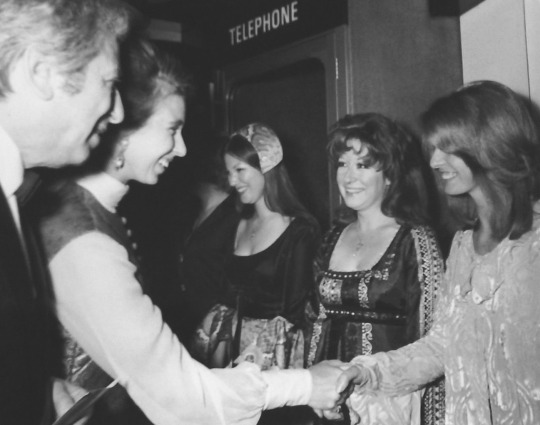
1972 - Princess Anne meeting Jane Asher, girlfriend of Paul McCartney from ‘63 to ‘68, at the charity benefit premiere of the film "Henry VIII and His Six Wives"

1974 - Princess Margaret talking to Elton John at a charity dinner
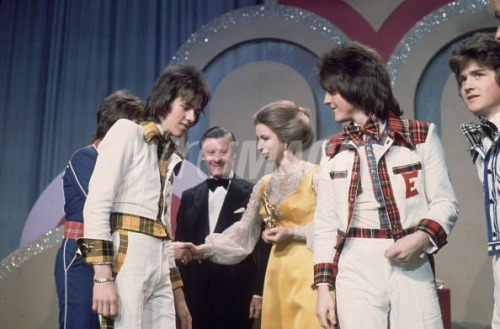
1975 - Princess Anne with members of the Bay City Rollers at the Carl Alan Awards held at the Lyceum Ballroom, London

1975 - Queen Elizabeth meeting Barbra Streisand at the premiere of Funny Lady (the sequel to her hit movie Funny Girl) in 1975.
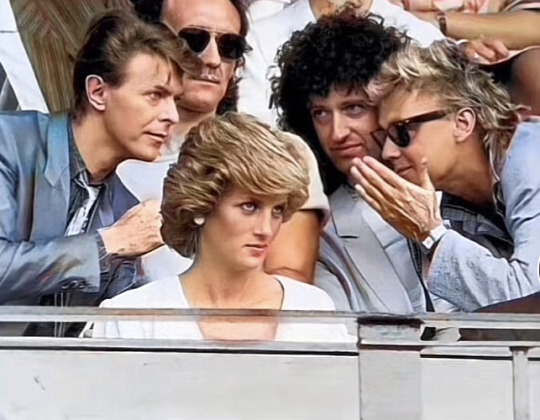
1985 - Princess Diana with rock legends David Bowie, Brian May and Roger Taylor at the Live AID performance, Wembley Stadium
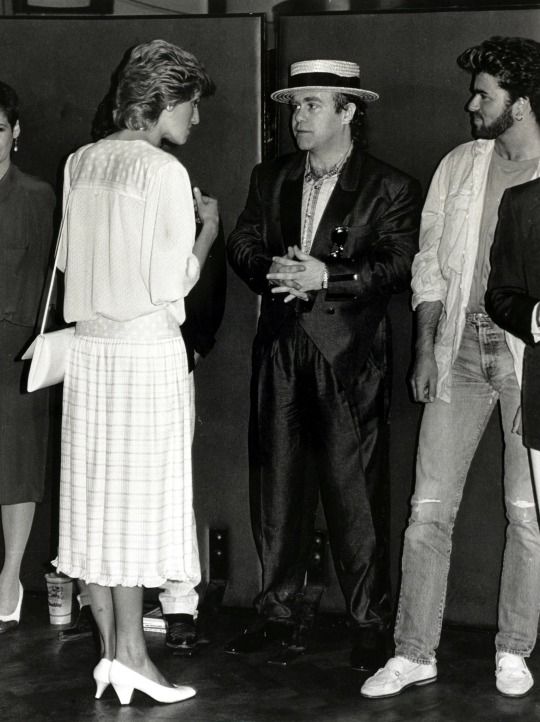
1985 - Princess Diana chatting with Elton John and George Michael at the Live AID Performance, Wembley Stadium

1997 - Queen Elizabeth meeting Posh, Scary, Ginger, Baby & Sporty AKA the Spice Girls backstage at the Royal Variety Performance, Victoria Palace Theatre

2012 - Queen Elizabeth talking to Elton John, Cliff Richard, Shirley Bassey, Tom Jones and Paul McCartney, backstage at her Diamond Jubilee concert held at Buckingham Palace
#i had a lot of fun making this#i hope you enjoy!#princess anne#princess royal#princess margaret#queen elizabeth ii#diana princess of wales#jane asher#paul mccartney#george harrison#john lennon#ringo starr#brian epstein#the beatles#the supremes#diana ross#barbra streisand#elton john#bay city rollers#spice girls#david bowie#queen band#brian may#roger taylor#george michael#tom jones#shirley bassey#cliff richard
114 notes
·
View notes
Text
Macbeth (An Undoing) by Zinnie Harris at the Royal Lyceum Theatre: Theatre Review
I’ve enjoyed a great deal of Zinnie Harris’ feisty theatre, with one exception (The Wheel, which landed me in a bit of hot water for negatively reviewing a preview) but the remainder of her work has thrilled me, particularly The Lyceum’s Duchess (of Malfi) in which both blood and brackets were in conspicuous evidence. Likewise with her modern (not modern) take on Macbeth.
I respectfully suggest…

View On WordPress
0 notes
Video
The Lyceum at Christmas by FotoFling Scotland
Via Flickr:
The Snow Queen By Hans Christian Andersen, adapted by Morna Young Directed by Cora Bissett Thu 23 Nov – Sun 31 Dec 2023
0 notes
